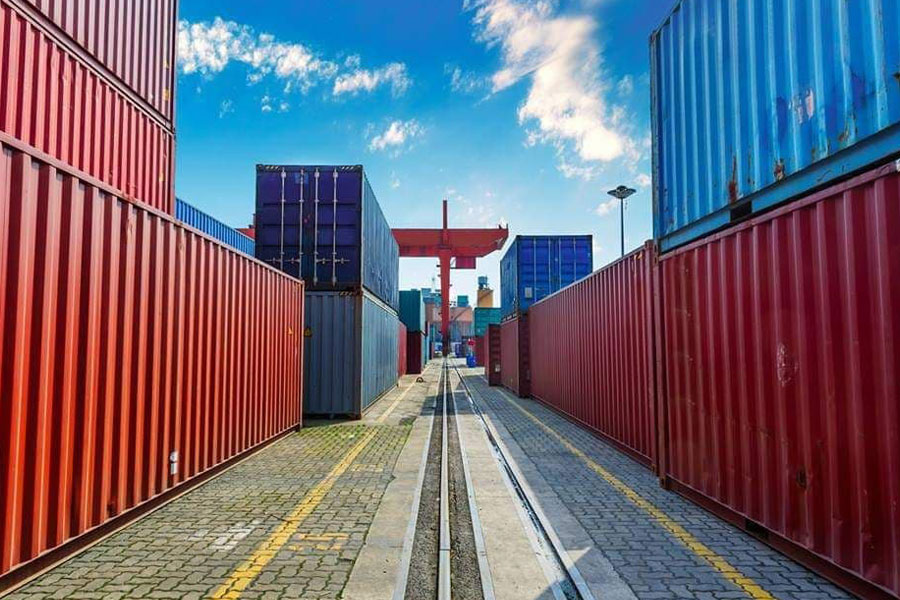
Radar | Feb 26,2022
The Ethiopian Commodity Exchange (ECX) has set floor and ceiling prices for trade in oilseeds and pulses.
The Exchange’s board of directors, chaired by Yinager Dessie (PhD), central bank governor, was pushed to set the thresholds by a growing mismatch between prices for sesame at the ECX and in international markets.
A quintal of oilseeds sells for 7,400 Br in the international market while prices at the Exchange peaked at 10,000 Br, diminishing exporter’s profit margins. More recently, the disparities began to cause them painful losses.
The floor and ceiling prices are to be revised every two weeks. Since officials introduced the thresholds, the highest price for a quintal of sesame dropped at the Exchange by a fifth to 8,400 Br. Previously, the starting offer of the day was set three percent below the previous day’s prices.
The Ministry of Trade & Regional Integration (MoTRI) regulates the sesame trade, revising the threshold prices for oilseed transactions at the ECX. Last year, 110,000tns of oilseeds valued at 8.5 billion Br were traded through Exchange’s floor.
Earlier this year, the authorities made similar changes to the pricing mechanism for coffee traded on the ECX, adopting weekly prices determined by the Coffee & Tea Authority. The coffee trade had suffered from a mismatch between domestic and international prices for years, but the disparity became more pronounced beginning last September.
“Buyers are willing to pay premium prices,” said Gemechis Melaku, executive director of export trade at the Ministry. “Sellers tend to ask for more.”
Buyers include exporters who are also in the import business. They buy the commodities at an inflated price and generate foreign currency to finance their import business, which generates profits that compensate for losses sustained from the export.
“This practice is exacerbating imported inflation,” said Gemechis.
Officials hope the new rules will help reverse declining foreign exchange income from oilseeds exports. Oilseeds placed high on the list of top export items two years ago, generating 430 million dollars and accounting for nearly 12pc of total export revenues. Earnings fell by over 10pc the following year.
Atlaw Alemu (PhD), an economist lecturing at the Addis Abeba University, believes the government should have no business intervening in the market. He argued that low productivity and the associated supply shortages drive domestic prices for agricultural commodities.
“Rather than controlling prices, it should work on the root causes of the price disparities,” said Atlaw.
The authorities remain adamant that the surging prices result from illicit trade and hoarding practices.
“The threshold is a tool to prevent the hoarding of commodities anticipating higher prices in the future,” said Bereket Meseret, trading operations manager for the ECX.
Trade officials claimed to have discovered 60,000tn of cash crops stashed at warehouses owned by 105 exporters following investigations conducted three months ago in Addis Abeba and Adama. This pushed the Trade Ministry to amend a decade-old directive regulating oilseeds trade and export, forcing exporters to ship their crops within a month instead of a year.
Sisay Asmare, president of the Ethiopian Pulses, Oil Seeds & Spices Processors & Exporters Association, says the price disparities have been causing frustration among exporters. Formed 15 years ago, the Association represents 430 exporters.
“The discrepancy in price between the ECX and the international market has meant that exporters are often selling at a loss,” he said.
For Ali Munir, sesame trading is more than a business; it is a family legacy his father and grandfather built from scratch. Ali serves as the export manager of Munir Hassen Plc, a company incorporated in 1976. It exports up to 500 containers of oilseeds, pulses, and spices annually. A container can hold 19tn of sesame.
Last year, however, the company’s volume dropped by more than a quarter due to surging sesame prices in the domestic market.
“There’s a cutthroat competition in sourcing oilseeds from the ECX,” Ali told Fortune.
Exporting sesame may have yielded a high profit in the past; the reverse is true now, according to Capital Atmoisa, chief executive officer (CEO) of Oliva Agro-Industry Plc. His company faced chronic supply shortages, particularly of oilseeds such as sesame. Incorporated in 2008 with an initial capital of 30 million Br, Oliva Agro-Industry is among the agro-processors that buy the cash crop from the ECX. It has a plant in Burayu town, in the Oromia Regional State.
Oliva Agro-Industry ships organic and conventional hulled sesame to high-value markets abroad, including the US and Europe. The company struck a deal with a US-based buyer to supply a little more than 800tns of hulled sesame at 2,200 dollars a tonne. Although the selling price was 55pc higher than the price of the raw product, the company has been struggling to keep up its end of the deal.
“We’re waiting for the next harvesting season to buy oilseeds,” said Atmoisa.
Oliva Agro-Industry used to source up to 15,000qtl of sesame annually from smallholder farmers in Humera and Dansha in the country’s northwestern part. The militarised conflict in the north, which accounts for 90pc of national sesame production, has negatively impacted supply, slashing the 3.6 million quintals of sesame harvested by 300,000 small-scale farmers.
Over 70pc of the 369,000hct of land covered by oilseeds is in the western regions of the Tigray Regional State, including Humera and Welqayit, and central and west Gonder of the Amhara Regional State.
The situation has yet to improve even after Oliva Agro-Industry was selected as one of five exporters allowed to buy sesame through a designated trade window introduced at the ECX six months ago.
“It’s been three months since we bought sesame from the trading floor,” Atmoisa told Fortune.
PUBLISHED ON
Aug 20,2022 [ VOL
23 , NO
1164]

Radar | Feb 26,2022

Radar | Apr 06,2019

Fortune News | Feb 27,2020

Fortune News | Jul 03,2021

Fortune News | Jul 01,2023

Radar | Jul 24,2021

Radar | Oct 09,2021

Radar | Apr 24,2023

Radar | Nov 20,2021

Fortune News | May 04,2019

Dec 22 , 2024 . By TIZITA SHEWAFERAW
Charged with transforming colossal state-owned enterprises into modern and competitiv...

Aug 18 , 2024 . By AKSAH ITALO
Although predictable Yonas Zerihun's job in the ride-hailing service is not immune to...

Jul 28 , 2024 . By TIZITA SHEWAFERAW
Unhabitual, perhaps too many, Samuel Gebreyohannes, 38, used to occasionally enjoy a couple of beers at breakfast. However, he recently swit...

Jul 13 , 2024 . By AKSAH ITALO
Investors who rely on tractors, trucks, and field vehicles for commuting, transporting commodities, and f...

Oct 18 , 2025
The political establishment, notably the ruling party and its top brass, has become p...

Oct 11 , 2025
Ladislas Farago, a roving Associated Press (AP) correspondent, arrived in Ethiopia in...

Oct 4 , 2025
Eyob Tekalegn (PhD) had been in the Governor's chair for only weeks when, on Septembe...

Sep 27 , 2025
Four years into an experiment with “shock therapy” in education, the national moo...